“Comparison is the thief of joy,” or so the saying goes (it’s been, it seems, incorrectly attributed to Theodore Roosevelt, Mark Twain, and C. S. Lewis), since some folks can really never enjoy what they have if someone else has “more,” however they choose to define that. But the real issue is when this feeling ends up causing someone to actually take action.
A man shared how a jealous woman got herself in deep trouble after she decided to “secretly” cut down multiple old and very valuable trees on his property. As it turns out, old, very large trees are incredibly valuable, generally irreplaceable and, it should go without saying, destroying your neighbor’s property is a crime.
Constant jealousy of a neighbor’s yard is pretty unhealthy
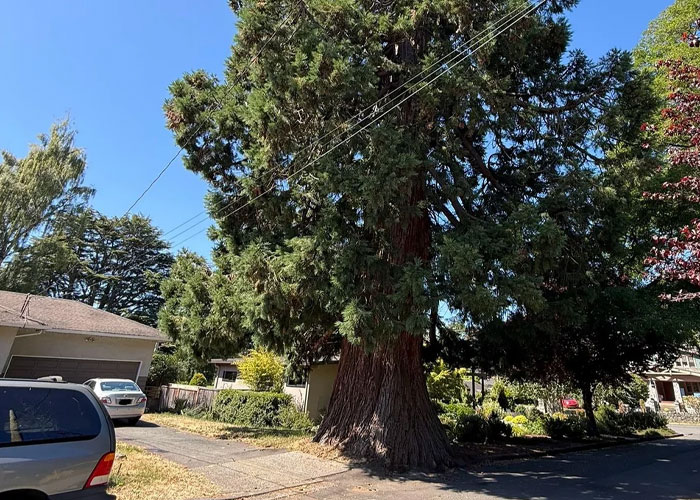
Image credits: augustinthegarden / reddit (not the actual photo)
So one family realized their neighbor had destroyed their trees when they were on holiday
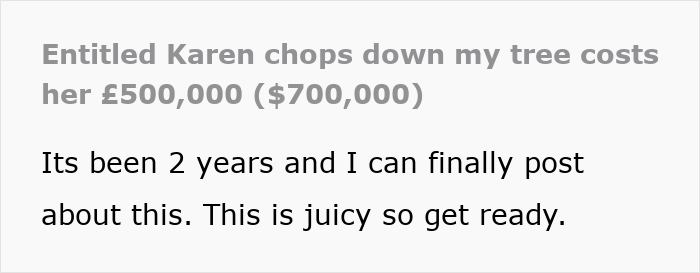
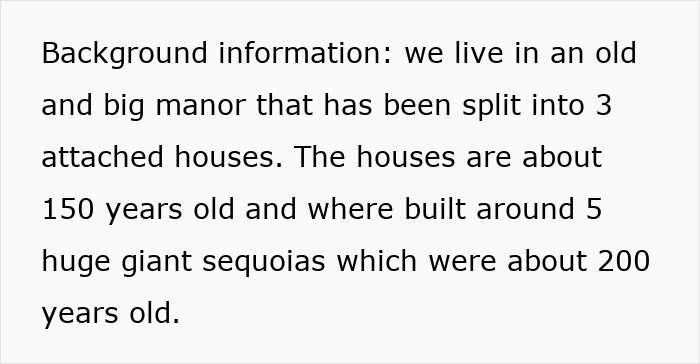
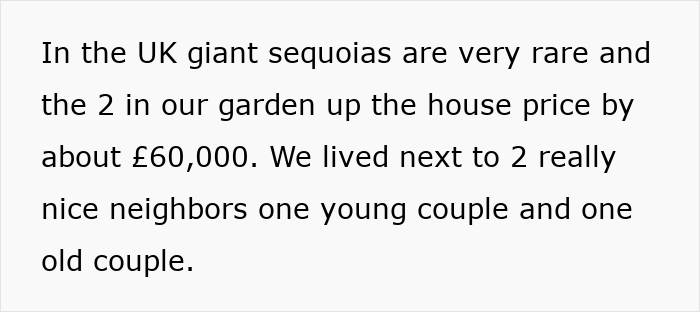

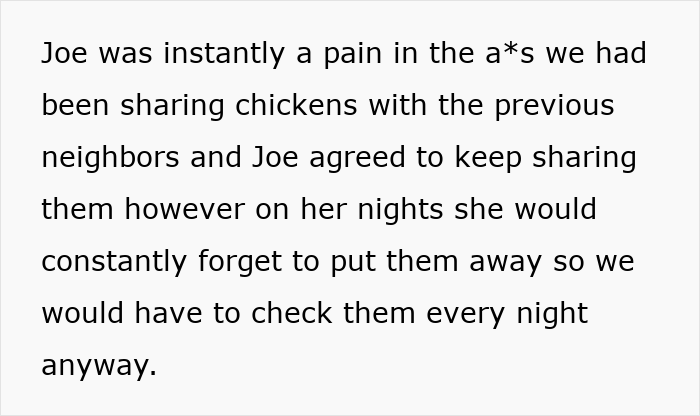

Image credits: The Yuri Arcurs Collection / freepik (not the actual photo)
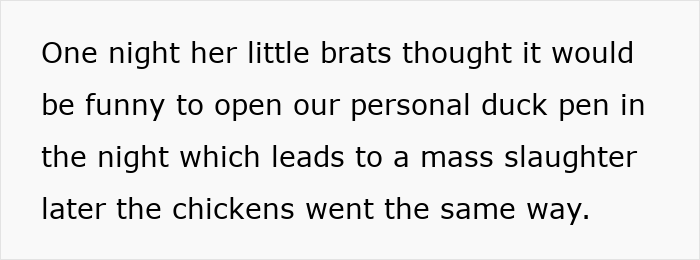
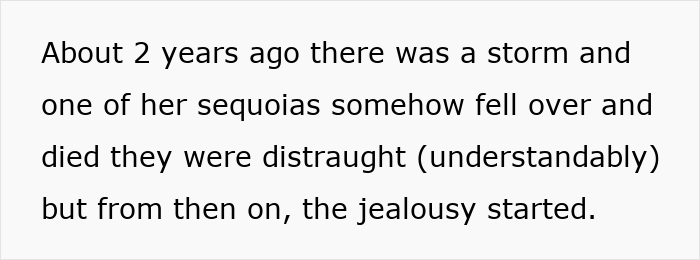
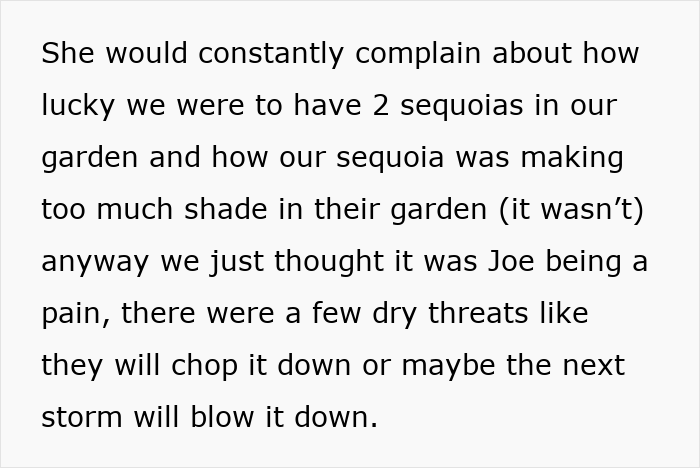
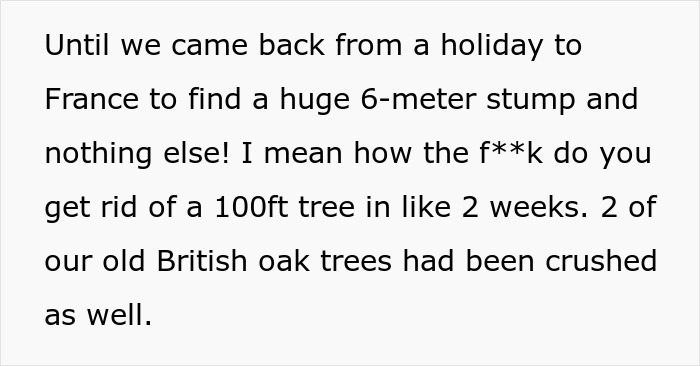
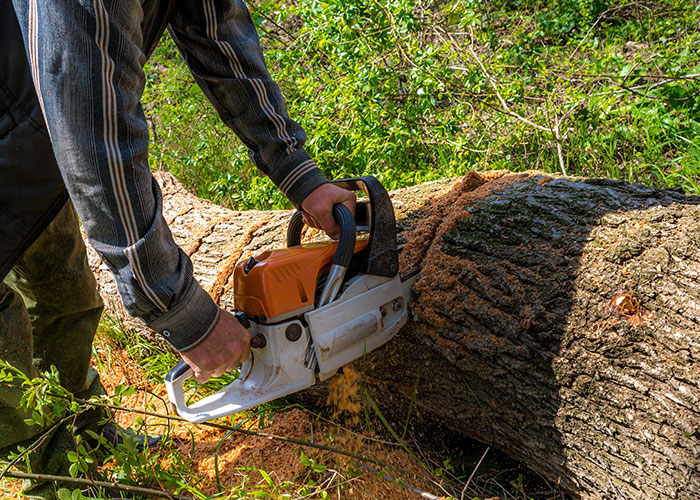
Image credits: andreymuravin / freepik (not the actual photo)
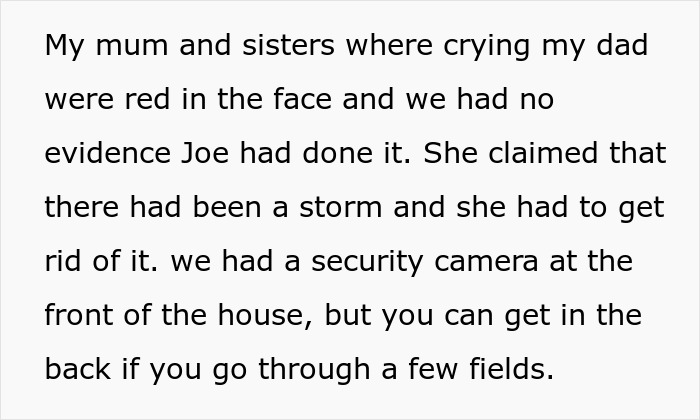
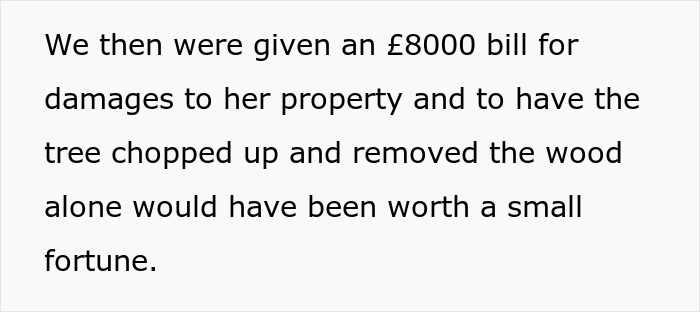
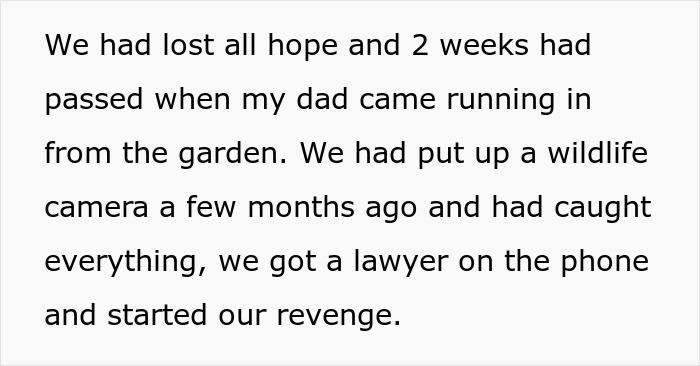
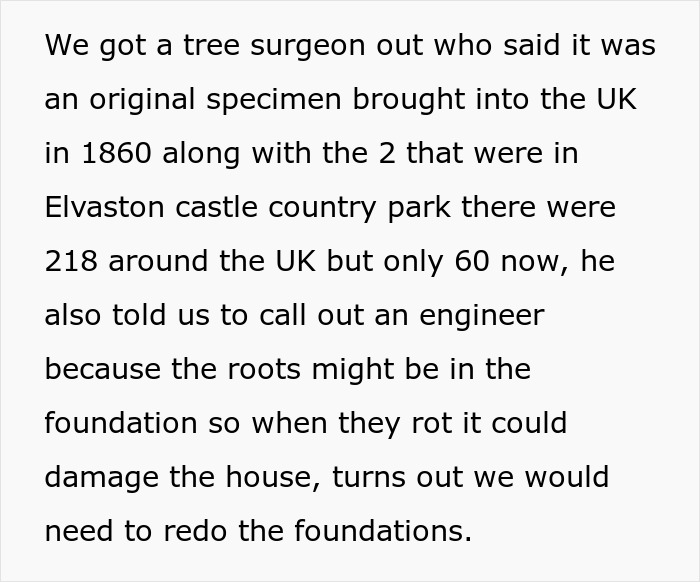

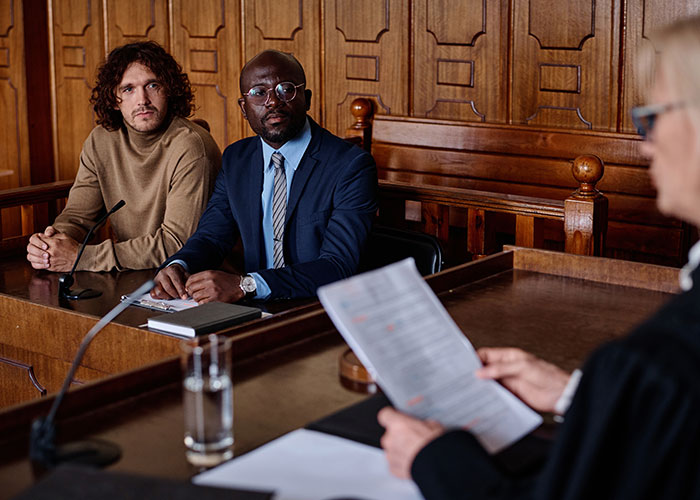
Image credits: Anna Tolipova / freepik (not the actual photo)
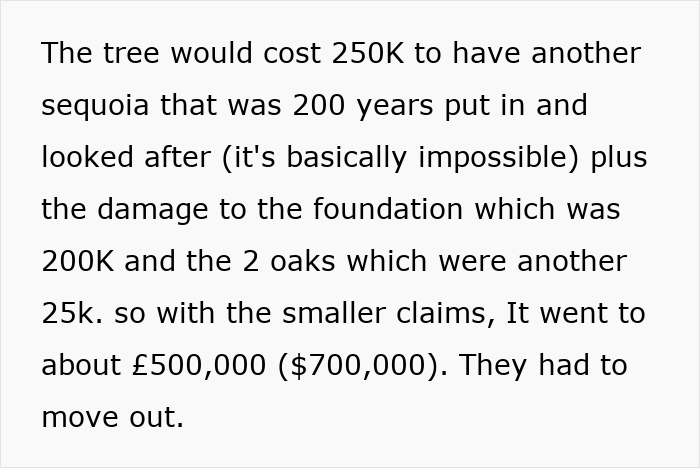
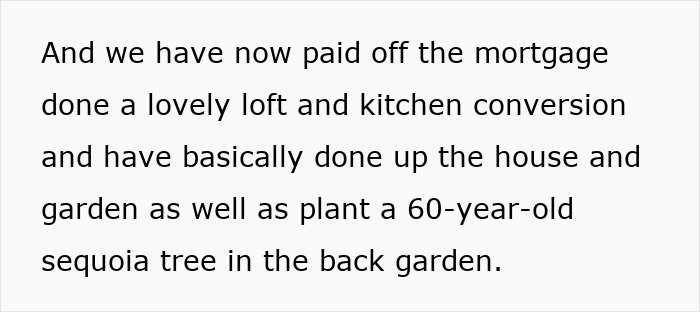
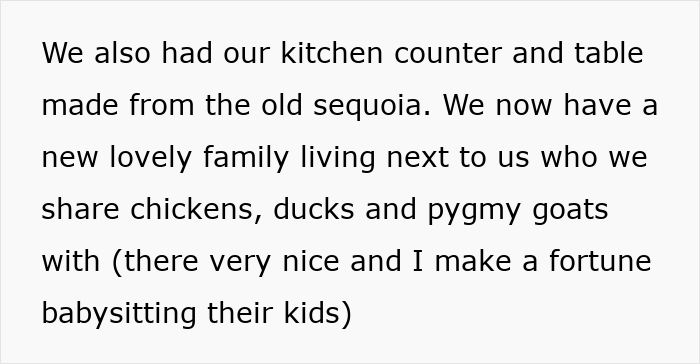
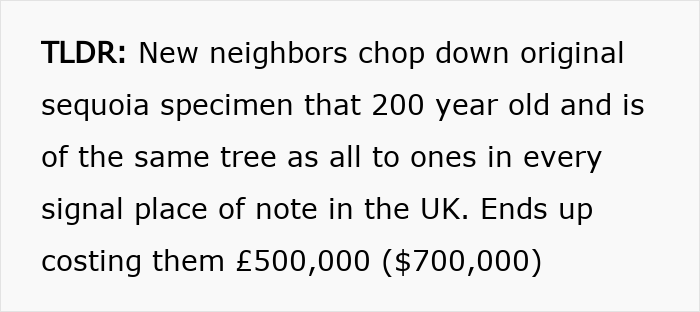
He shared a few more details later
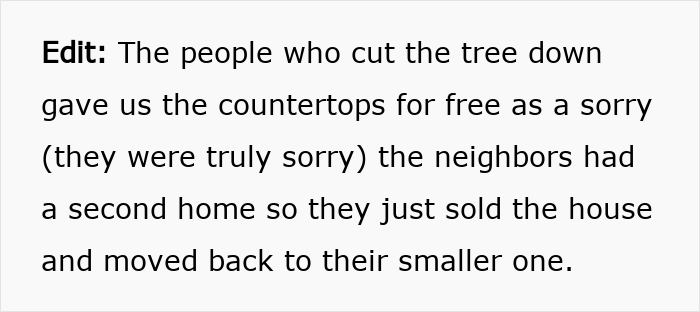
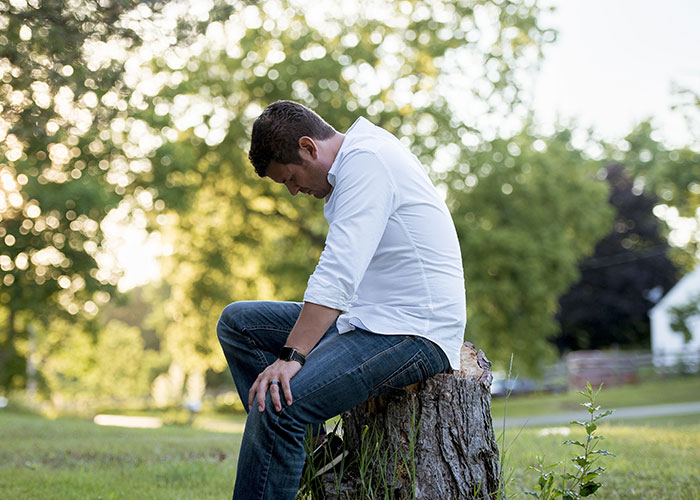
Image credits: wirestock / envatoelements (not the actual photo)
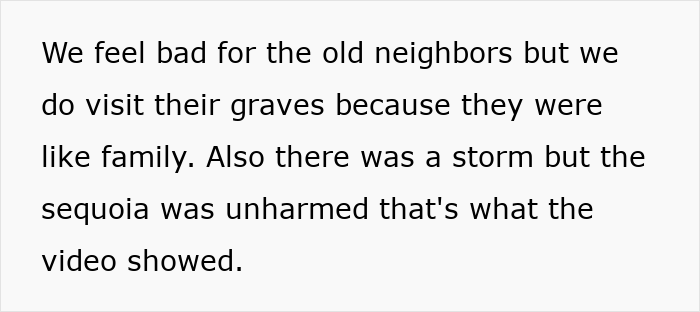
Image credits: j3r3my_r_c00k
You can, in fact, pretty easily put a monetary value on trees
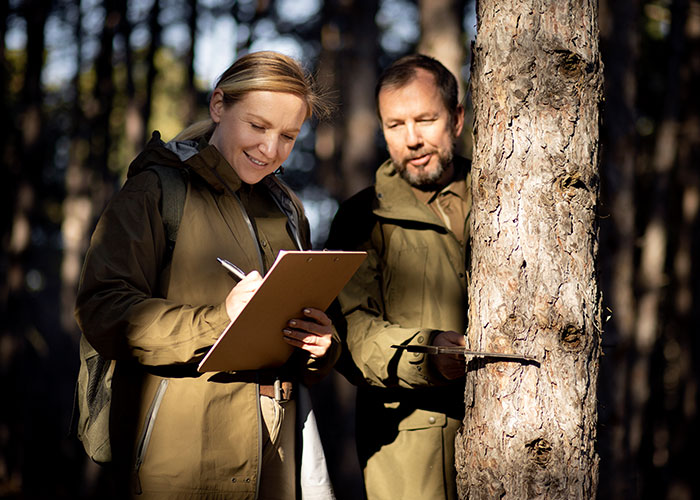
Image credits: freepik (not the actual photo)
To the less-informed observer, old trees tend to fly under the radar as part of an immovable asset’s true worth. People can look at them as a pleasant backdrop or source of shade but do not typically calculate the tangible and financial value they are adding up to. Mature trees actually are an asset, a valuable one that can contribute to property worth, cut costs, and even offer long-term money savers far into the future compared to their aesthetics. Indeed, in some places, there are even special legal protections set up for old trees, even if they are on private property. For example, in Ireland, trees “covered” under Tree Preservation Orders (TPOs) need the consent of a planning authority before they can be removed.
However, laws aside, there are very practical reasons to keep them. The most obvious and first value is “curb appeal”. A home bounded by mature trees conveys a sense of establishment, invitingness, and fastidious care. Real estate studies consistently report that homes with good, mature trees are worth 7%–19% more than their treeless counterparts. The effect is immediate: consumers are drawn to those properties that seem to be anchored, literally, to beauty and stability. An empty yard can be landscaped in a season, but that kind of canopy offered by a mature tree takes decades to develop. That priceless magic in a moment is worth paying for.
Old trees also provide “practical, quantifiable savings”. Their canopy can lower summer cooling costs by preventing the heat from building up on rooftops and siding. A well-placed tree can save as much as 15–30% on air-conditioning costs, depending on the climate and positioning. In the winter, they can act as windbreaks, reducing heating costs. And over a period of time, those savings add up to a nice sum, a sort of dividend on the “investment” that is your old oak, maple, or the aforementioned sequoia.
The advantages are significant if you think about it for a moment
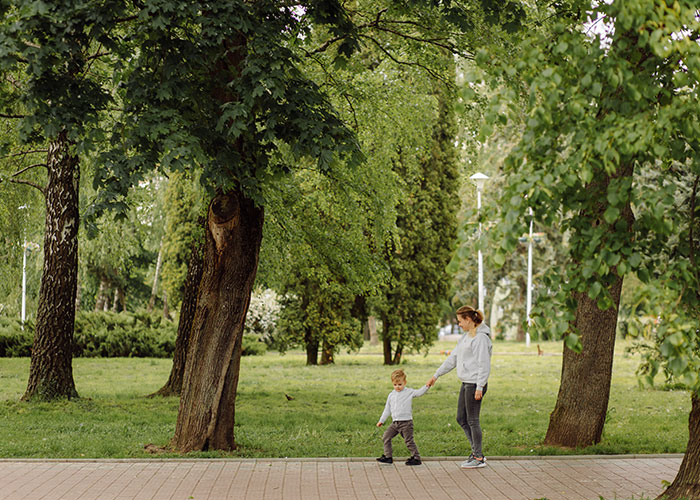
Image credits: bristekjegor (not the actual photo)
And then there’s “environmental value”, which is inextricably connected to property desirability. Big, established trees clean the air, filter out noises, and give natural stormwater drainage by absorbing thousands of gallons of rainwater annually. In flood-prone regions, this natural water-absorbing function can prevent expensive water damage, a situation that shrewd buyers (and insurers) don’t treat lightly. One large tree also stores hundreds of pounds of carbon, a physical representation of green living, increasingly attractive in the modern housing market, although, as we see here, also an eyesore for an entitled neighbor.
Another frequently overlooked factor is “replacement cost”. If the old tree is removed, either intentionally or storm-battered, the expense of replacing it with one of similar size is astronomical. Large nursery-raised trees can run thousands to buy and plant, and even so will never be as ecologically mature or stable in the roots as a hundred-year-old example. You cannot “order-up” the decades of development that provide an older tree with its character and value. That lack makes them valuable by their very nature.
Old trees also promote “neighborhood and community charm”. Streets lined with mature trees have lower crime rates, slower traffic, and higher property demand. Homebuyers often rely on buying a house, but they’re really investing in an atmosphere. A tree-lined, shaded street is seen as safer, quieter, and more pedestrian-friendly, all considerations that affect price and reputation at neighborhood level. Unfortunately, as trees lack a visible price tag, they’re easy to underestimate. Some homeowners even view them as a blank or even a drawback if they’re worried about maintenance expenses. In most cases, though, proper care, pruning, disease prevention, and structural assessment, is but a fraction of the financial value they add to the property over time.
In short, a mature tree is more than a chunk of nature on your land, it’s a living investment and, just as importantly, a beautiful accessory to your yard. It raises curb appeal, reduces utility costs, decreases environmental risk, and brings an irreplaceable quality of maturity and character to your home. Although new landscaping can be nice, no level of rapid planting can match the benefits an old, well-established tree offers now. If you’re lucky enough to have one on your property, don’t chop it down. You’re removing not only shade or vista, but tens of thousands of dollars in future value, value that’s been quietly accruing for decades.
He also answered some reader questions in the comments
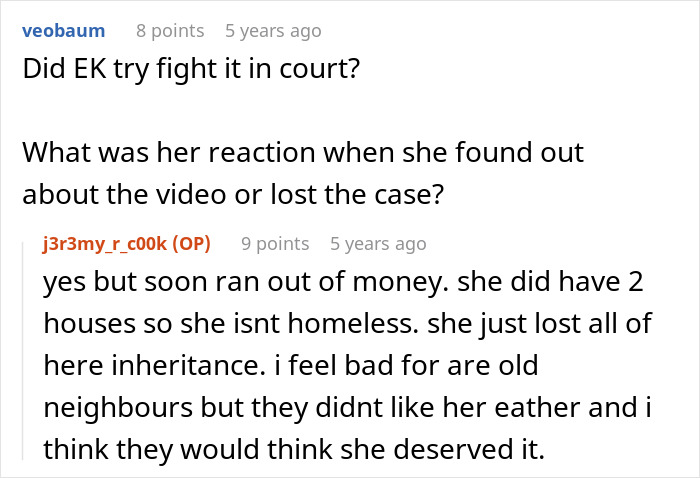
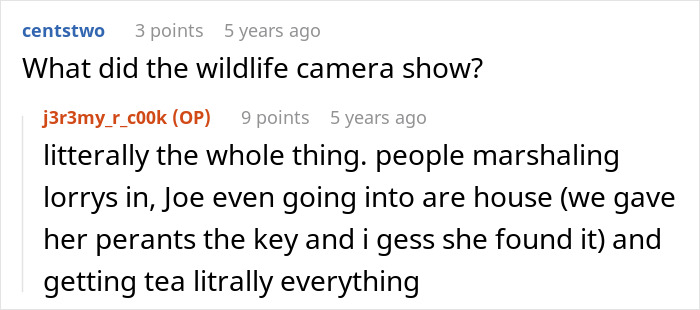
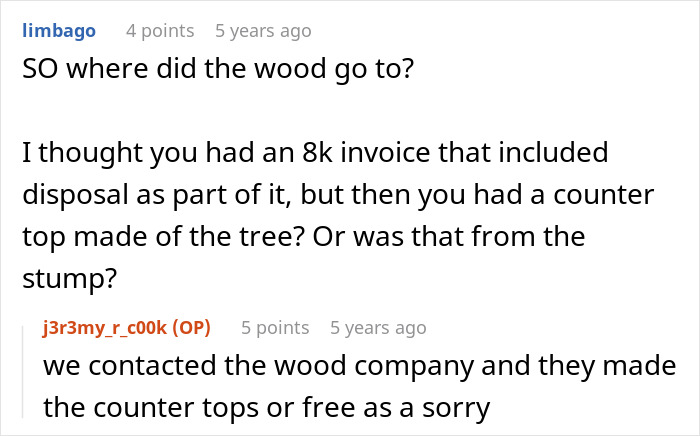
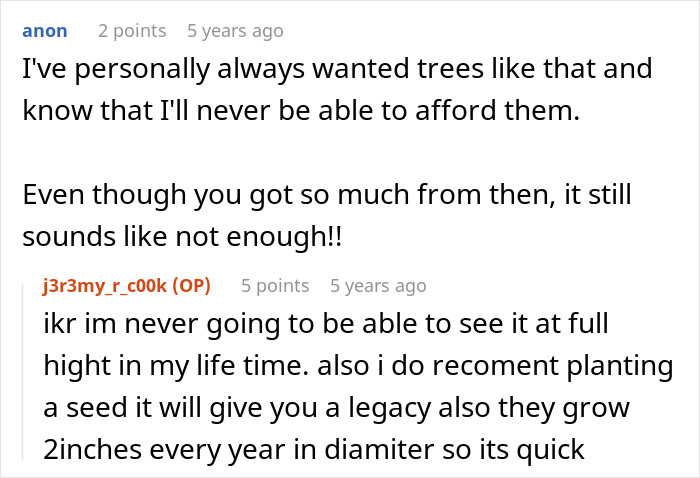

Many commenters were happy the woman ended up punished for destroying the trees

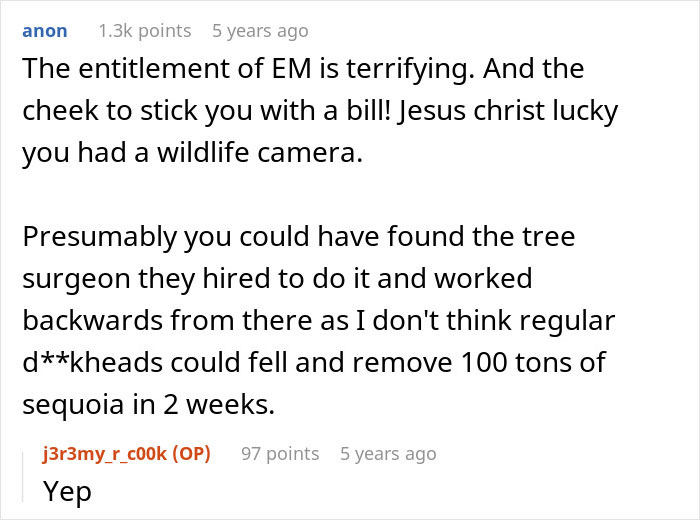

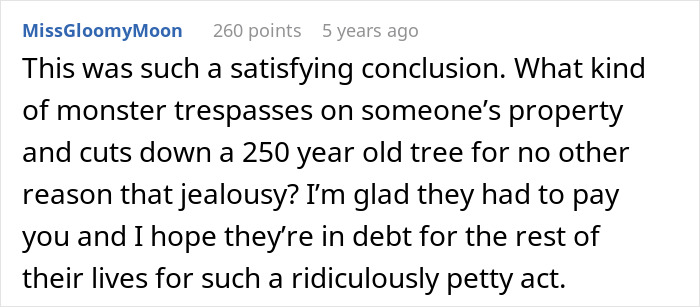

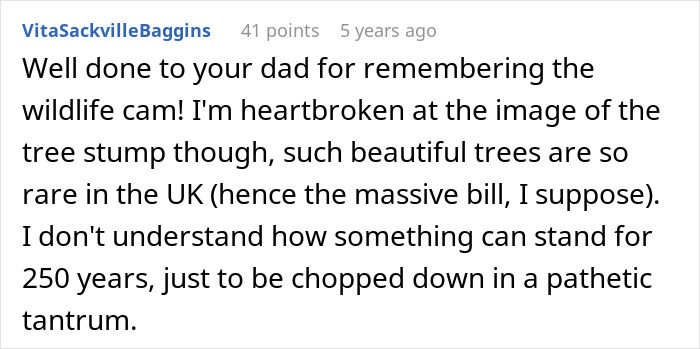


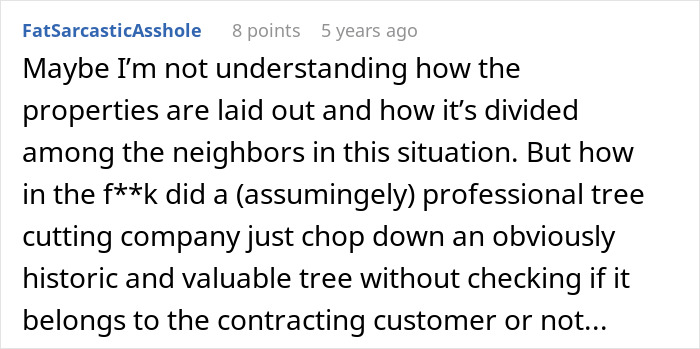





 Follow Us
Follow Us





